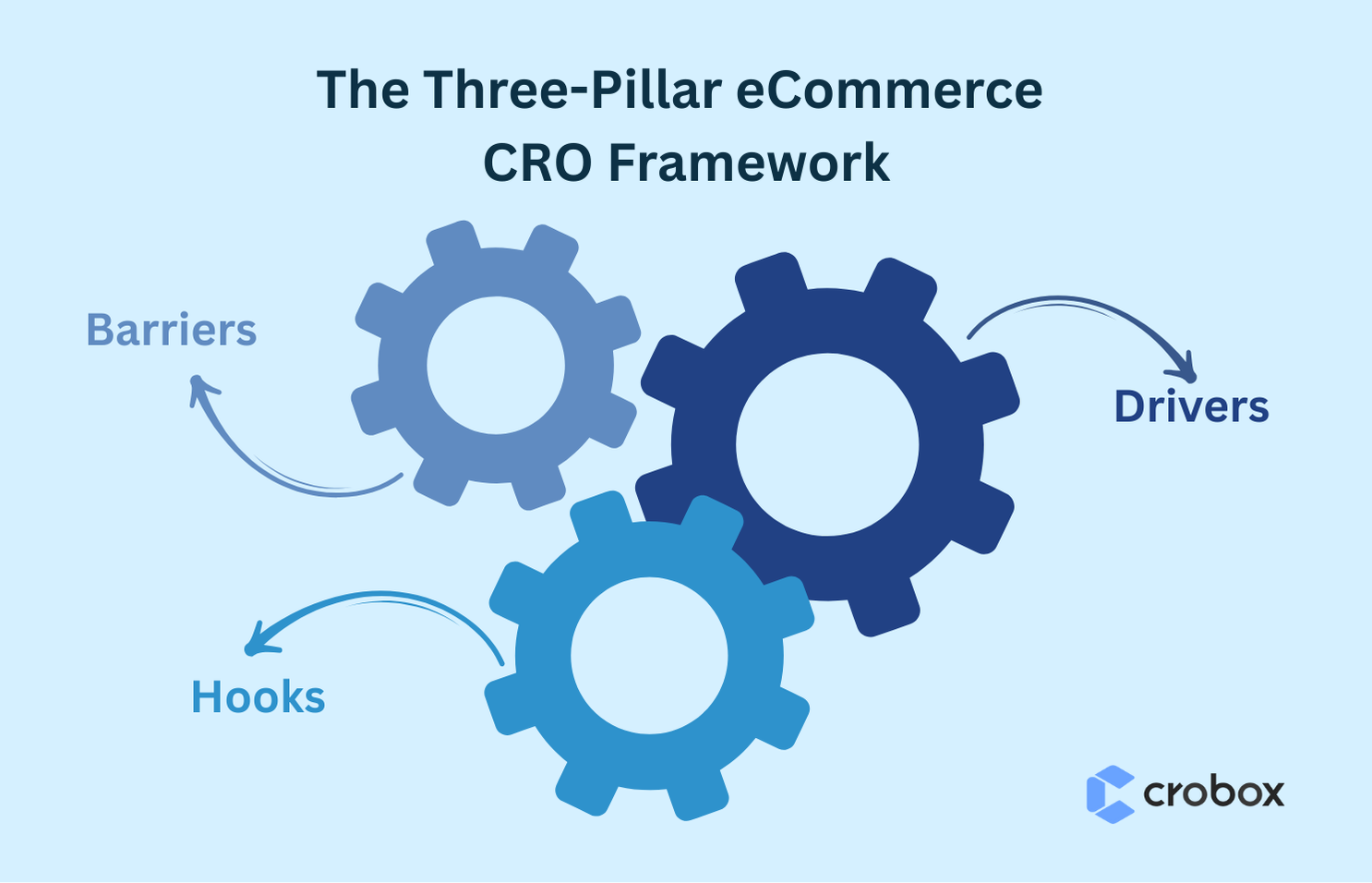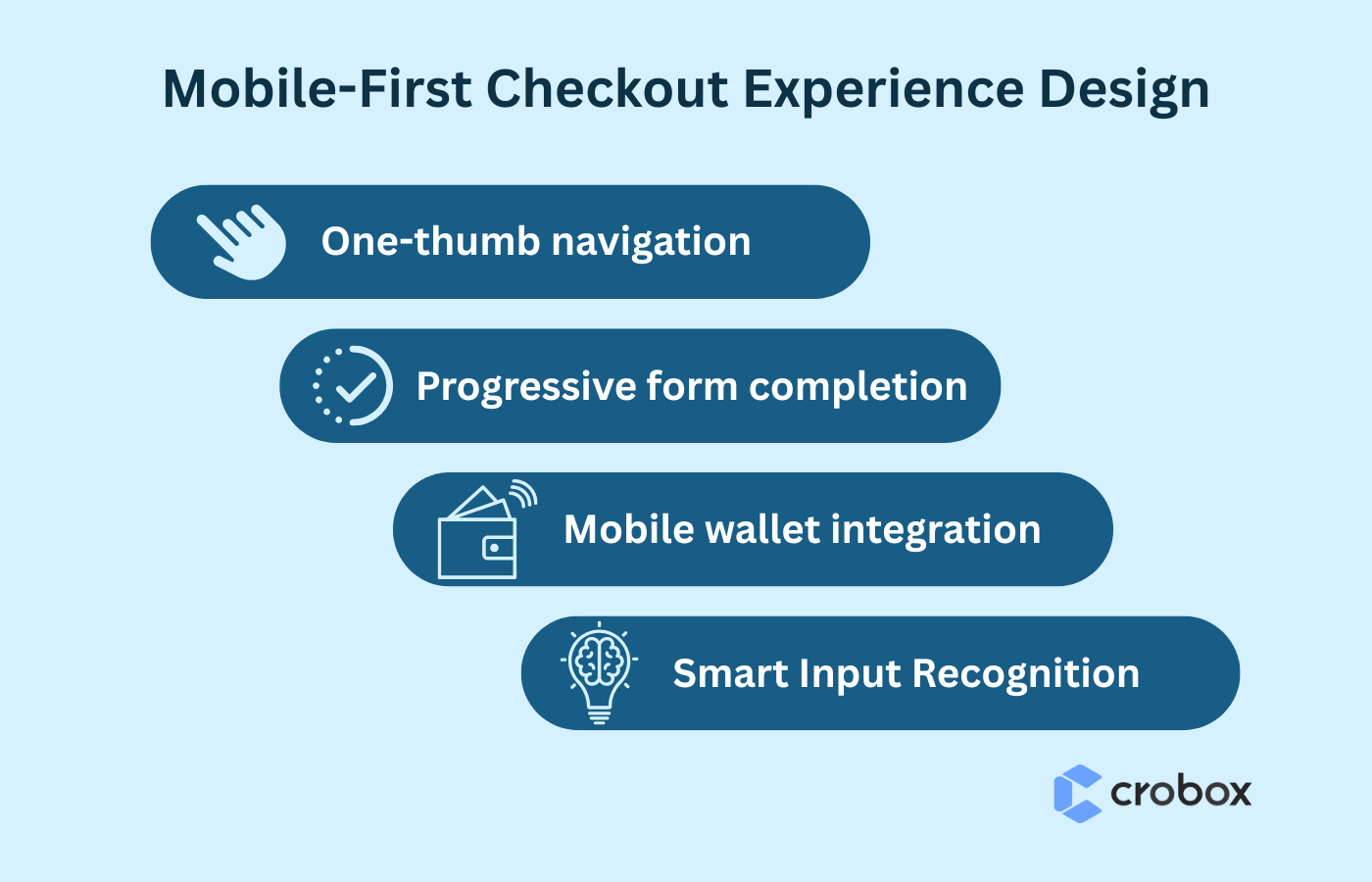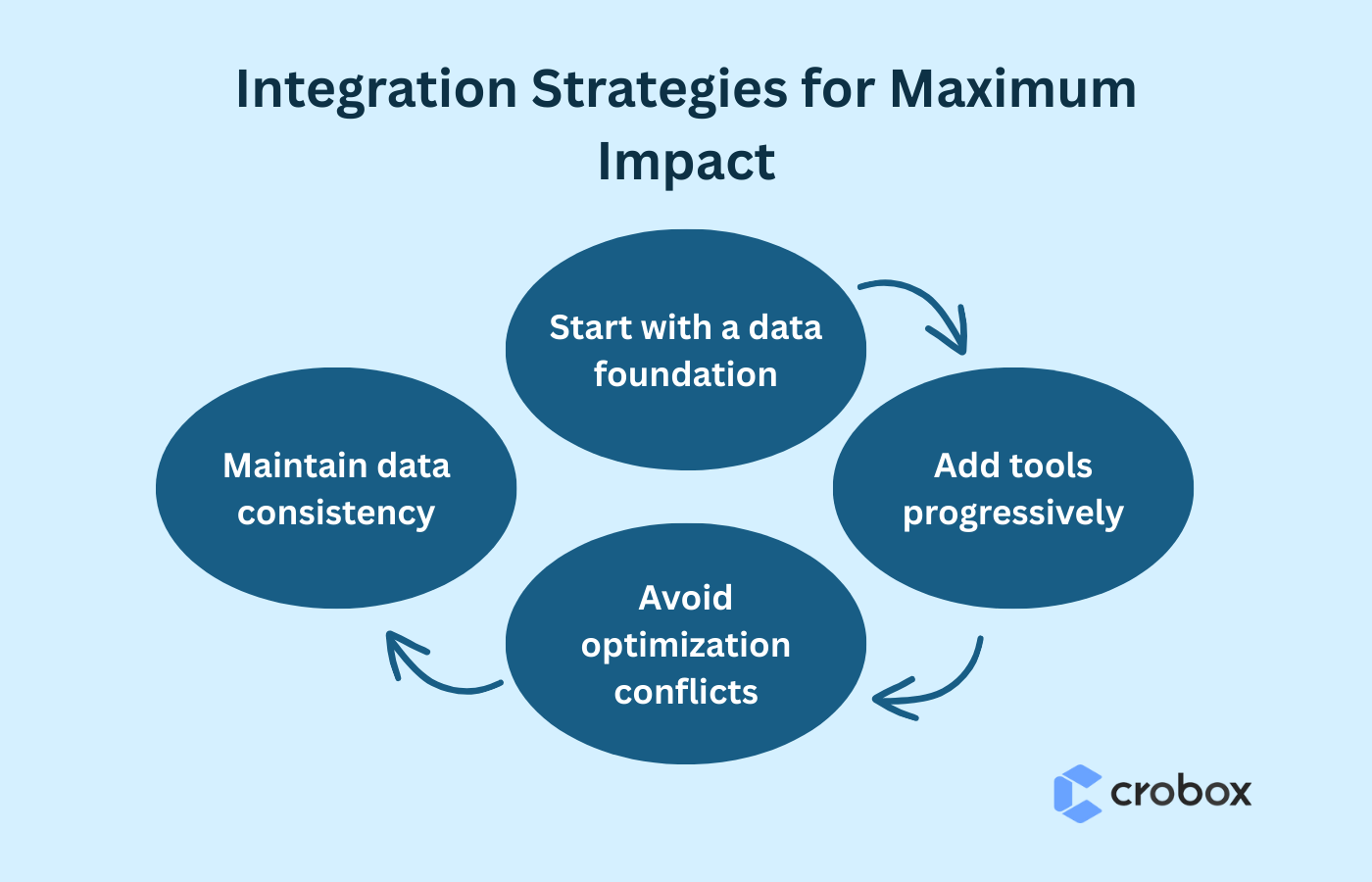
Global e‑commerce keeps smashing records, where online sales are expected to climb over $8 trillion by 2028 - a trajectory that shows no sign of slowing. Even after all that growth, most online stores still struggle to turn browsers into buyers. That gap between traffic and transactions is the battleground where eCommerce conversion rate optimization (CRO) wins or loses revenue.
eCommerce conversion optimization is the systematic practice of turning a higher share of visitors into customers by improving every touchpoint through data‑driven testing and user‑centric design. Mastering eCommerce CRO means addressing friction, boosting trust, and guiding shoppers toward the actions that matter: add‑to‑cart, checkout, and repeat purchase.
To find the best strategies for eCommerce conversion rate optimization and see a step-by-step guide on how to implement them, this blog post is your ideal solution with a clean blueprint. Take a comfy seat and let’s reveal the goodies for your online store boost when it comes to conversions.
Behind every conversion is a complex mix of emotions, expectations, and decision-making shortcuts. While design and A/B tests matter, it’s the psychological moment behind each click that truly drives results.
Today’s online shoppers are overloaded with choices, bombarded with ads, and constantly multitasking. This leads to decision fatigue, a state where people are less likely to act, even when presented with the “perfect” offer. Add to that the paradox of choice (when more options create anxiety rather than satisfaction), and it is no wonder conversion rates remain stubbornly low.
Cognitive biases play a central role, too. Shoppers rely on mental shortcuts like social proof (“Others bought this, so I should too”), urgency (“Only 2 left!”), and the fear of missing out on making quicker decisions. By combining consumer psychology with data, enterprise retailers can create personalized shopping experiences that naturally guide users toward conversion. That’s where CRO becomes conversion persuasion.

To build a high-performing eCommerce CRO strategy, it’s crucial to understand the three forces that shape every customer journey: Drivers, Barriers, and Hooks. Think of them as the diagnostic lens for every touchpoint on your site.
Modern shoppers compare every store against the lightning‑fast experience they get on Amazon. If search results feel clunky or filters misfire, they bounce. In fact, more than 60 % of consumers say the ease of product discovery is the single biggest factor in whether they buy or abandon a brand. For enterprise retailers focused on eCommerce conversion rate optimization, this makes product discovery a crucial factor: get it right and you shorten the path to purchase, or get it wrong and you lose the sale, and possibly the customer.
Modern consumers expect:
When these elements work together, they eliminate decision fatigue and drive higher engagement, setting the stage to increase eCommerce conversion rates dramatically.
Personalized product suggestions are one of the fastest ways to improve the eCommerce conversion rate and lift basket size. Industry studies show that shoppers who interact with recommendations generate 31% higher average order value, while many enterprise brands report 20–30% AOV gains after proper implementation. Three core recommendation engines power these results:
For retailers seeking enterprise capabilities without a heavy engineering lift, Crobox’s Product Finder plugs directly into any tech stack. Its AI models mix collaborative, content, and behavioral data to serve highly relevant suggestions that boost basket size while supporting scalable eCommerce conversion optimization. Check how Crobox helped ASICS raise conversions by 56 % through hyper‑relevant recommendations.
Static product pages are conversion killers. Dynamic and contextual messaging adapts to the moment, responding to a shopper’s location, device, inventory levels, and even the weather to create compelling reasons to buy now:
Crobox layers these real‑time signals across the discovery journey. The result is a guided path that reduces bounce, counters choice overload, and supports conversion optimization for eCommerce without feeling pushy.
By the time a shopper reaches the checkout, they have shown clear intent to buy, yet abandonment rates are still high, especially on mobile. For enterprise retailers focused on eCommerce conversion rate optimization, this final step is where revenue is either captured or lost.
Optimizing checkout is about removing friction, addressing doubt, and minimizing cognitive load so customers can confidently complete their purchases. In short: make checking out as easy as checking a box.
Successful eCommerce CRO strategies at checkout use a combination of psychological reassurance, design clarity, and payment flexibility to seal the deal. Let’s break it down.

Mobile traffic dominates eCommerce, but mobile conversions still lag behind desktop. Long forms, hard-to-click elements, and slow payment flow frustrate mobile shoppers, often enough to drive them away.
To improve the eCommerce conversion rate on mobile, brands must rethink the checkout experience through a mobile-first lens:
Enterprise brands that prioritize conversion optimization for eCommerce via mobile-specific UX often see double-digit improvements in mobile conversion rates and increased customer satisfaction to match.
Shoppers want choice, and they want to feel safe. For better eCommerce conversion rate optimization, consider optimizing payments in two key areas:
1. Flexible Payment Options:
2. Trust and Transparency:
Social proof has become one of the most powerful tools in eCommerce conversion rate optimization when it comes to trust and relevance. While reviews are foundational, today’s enterprise retailers are expanding their playbooks, leveraging user-generated content (UGC), social media integration, and real-time signals to give hesitant buyers the confidence they need to convert.
When deployed strategically, eCommerce CRO teams can use social proof not only to improve ecommerce conversion rates but also to build deeper brand credibility and customer connection. It is not just about showing stars and testimonials - it is about showcasing real people, real experiences, and real momentum.
Visual authenticity converts. User-generated content (UGC) increases conversion rates by up to 161% compared to traditional product photos and branded visuals. Why? Because shoppers trust other shoppers. Seeing products worn, used, or reviewed by real people reduces uncertainty, boosts relevance, and creates an emotional connection.
To harness UGC effectively for eCommerce conversion optimization, retailers should:
Whether it is a tagged Instagram photo, a TikTok unboxing, or a simple photo review, UGC builds trust fast and increases eCommerce conversion rates by making the experience more human.
In the quest to master eCommerce conversion rate optimization, raw traffic and surface-level metrics tell only part of the story. The real gold lies in behavioral analytics, a deep dive into how visitors interact with your site, what paths they follow, and where they hesitate or drop off.
Quantitative data shows what happens, while qualitative insights reveal the motivations and frustrations behind those actions. This rich context empowers conversion optimization for eCommerce teams to craft targeted, user-centric improvements that address real barriers and amplify drivers.
By integrating behavioral analytics into your CRO toolkit, your enterprise can pinpoint eCommerce friction points, optimize navigation flows, and tailor experiences with precision, turning guesswork into informed decisions that drive measurable lifts.
Taking behavioral insights a step further, predictive analytics leverages machine learning to forecast a shopper’s likelihood to convert at any given moment. These models analyze historical data and real-time behavior patterns to identify high-potential visitors and those at risk of abandoning.
With predictive analytics, eCommerce teams can:
This data-driven approach boosts brands to be proactive rather than reactive, improving eCommerce CRO by delivering the right message to the right customer at the right time. Tools like Crobox use predictive models to scale these personalized touchpoints, driving significant improvements in conversion rates and revenue.
For a successful eCommerce conversion rate optimization, simple A/B tests are just the beginning. Enterprise brands looking to truly elevate their eCommerce CRO must rely on modern experimentation methods such as multivariate testing, sequential testing, and evaluation of statistical significance.
2. Sequential testing helps manage overlapping experiments by analyzing performance trends over time. Applying statistical significance prevents costly false positives or missed opportunities.
Personalization adds complexity to conversion experimentation. When tailoring experiences to specific customer segments based on behavior, demographics, or purchase history, traditional A/B testing alone will not provide clear answers due to different audiences and varying contexts.
Advanced personalization testing involves segmenting customers and running on-point experiments that evaluate how different variants perform within each group. For example, an offer that converts well for new visitors may underperform for loyal customers. Testing with audience segmentation reveals these details and allows brands to optimize personalized messaging, layout, and product recommendations accordingly.
Even the most persuasive copy and exciting design can't save a site that loads slowly or functions poorly on mobile. The technical foundation of your website has a direct and often underestimated impact on your eCommerce conversion rate optimization efforts.
Studies show that even a 1-second delay in page load time can reduce conversions by up to 20%. And in mobile-first markets, a laggy, unresponsive interface can drive bounce rates through the roof. For enterprise retailers, technical performance is not just an IT issue - it is a revenue issue.
Optimizing site speed, ensuring mobile responsiveness, and prioritizing accessibility improve UX and expand your market reach for higher eCommerce conversion rates across segments. Additionally, these improvements often reduce bounce rates and strengthen brand perception, particularly among first-time visitors.
Google’s Core Web Vitals is a set of user experience metrics introduced as part of its page experience update. It measures real-world performance and loading behavior such as:
Improving these scores directly impacts how likely visitors are to convert. For example, a Deloitte study shows that improving mobile site speed by just 0.1 seconds led to an 8% increase in conversions in the retail sector.
By optimizing your Core Web Vitals, you are aligning technical SEO with eCommerce CRO, creating a faster and more fluid experience that ranks better and converts more effectively. Best practices include:
Enterprise retailers who invest in technical performance are rewarded with faster paths to purchase, higher user satisfaction, and stronger conversion metrics across every device and channel.
To scale eCommerce conversion rate optimization effectively, enterprise brands need more than one-off tactics - they need a unified, flexible CRO technology stack. This stack should bring together analytics, personalization engines, testing platforms, behavioral tools, and on-site messaging systems into one big ecosystem.
The goal is to build a stack that boosts eCommerce CRO performance today and adapts as your business evolves. This means selecting tools that integrate easily, scale with traffic and product volume, and support conversion optimization for eCommerce across every customer journey stage.
That’s where Crobox becomes a no-brainer. As an all-in-one personalization and product discovery engine, Crobox sits at the heart of your optimization stack, serving intelligent product recommendations, guiding shoppers with dynamic messaging, and delivering behavioral insights that inform every channel. It reduces the need for patchwork tech and delivers the conversion intelligence you need to win long-term.

To maximize ROI from your CRO tech stack, each tool should act as part of a synchronized system, not an isolated solution. That means more than just plug-and-play, and it requires a thoughtful implementation strategy:
Optimizing conversions is about building sustainable and scalable growth. To evaluate the real business impact of eCommerce conversion rate optimization, brands must look beyond traditional metrics like conversion rate alone. While conversion rate remains a core KPI, advanced CRO programs also track metrics like:
When tracked holistically, these indicators reveal how conversion optimization for eCommerce creates compounding value. They show not just which buttons get clicked, but which experiences build loyalty, increase AOV, and lower CAC.
Enterprise eCommerce journeys are rarely linear, so why track them as if they are? Traditional last-click attribution undervalues key CRO touchpoints like product discovery, intelligent search, or dynamic messaging. That’s why brands committed to ecommerce conversion optimization are turning to multi-touch attribution models.
With advanced attribution, you can:
Crobox integrates with leading analytics and attribution systems to provide clear visibility into how personalized experiences impact every stage of the funnel. That’s how you will get smarter testing, clearer ROI, and better budget justification.
There’s no one-size-fits-all playbook for eCommerce conversion rate optimization. Every industry has unique customer behaviors, motivations, and friction points. Here’s how industry-specific strategies can unlock higher performance:
The most successful enterprise brands align their CRO strategies with vertical-specific expectations, and tools like Crobox help you do just that by tailoring product discovery, recommendations, and messaging to what matters most in your market.
Staying ahead in eCommerce conversion rate optimization means being a part of modern innovation. Future-ready brands are already exploring advanced tools and technologies that go beyond standard CRO practices. Here are three trends shaping the future of eCommerce CRO:
Staying ahead of these trends is essential for higher business growth, so future-proof your conversion optimization for eCommerce by investing in technologies that grow with your customers.
Conversion rates vary by industry. Fashion may average 1.5–2%, while niche B2B stores can hit 5% or more. However, your own historical performance is the most valuable benchmark.
Quick wins like copy tweaks or button tests can show results in 2-4 weeks, while deeper changes (e.g., checkout flow or personalization) may take 3-6 months, depending on traffic and test complexity.
CRO focuses on conversions and getting users to take specific actions, while UX covers the overall experience. The best strategies combine both for growth and satisfaction.
Budgets vary by business size, but a common guideline is 5–10% of marketing spend. Crobox helps reduce tool bloat by offering product discovery, personalization, and messaging in one platform.
Avoid testing without statistical significance, ignoring mobile UX, over-optimizing for short-term gains, and neglecting post-purchase touchpoints.
Track uplift in conversion rate, AOV, and LTV over time. Use attribution models to link improvements to customer journeys and evaluate cumulative growth impact.
Start with high-traffic, high-intent pages, like product pages, category pages, and checkout. Apply the 80/20 rule: focus on where improvements deliver the biggest gains.